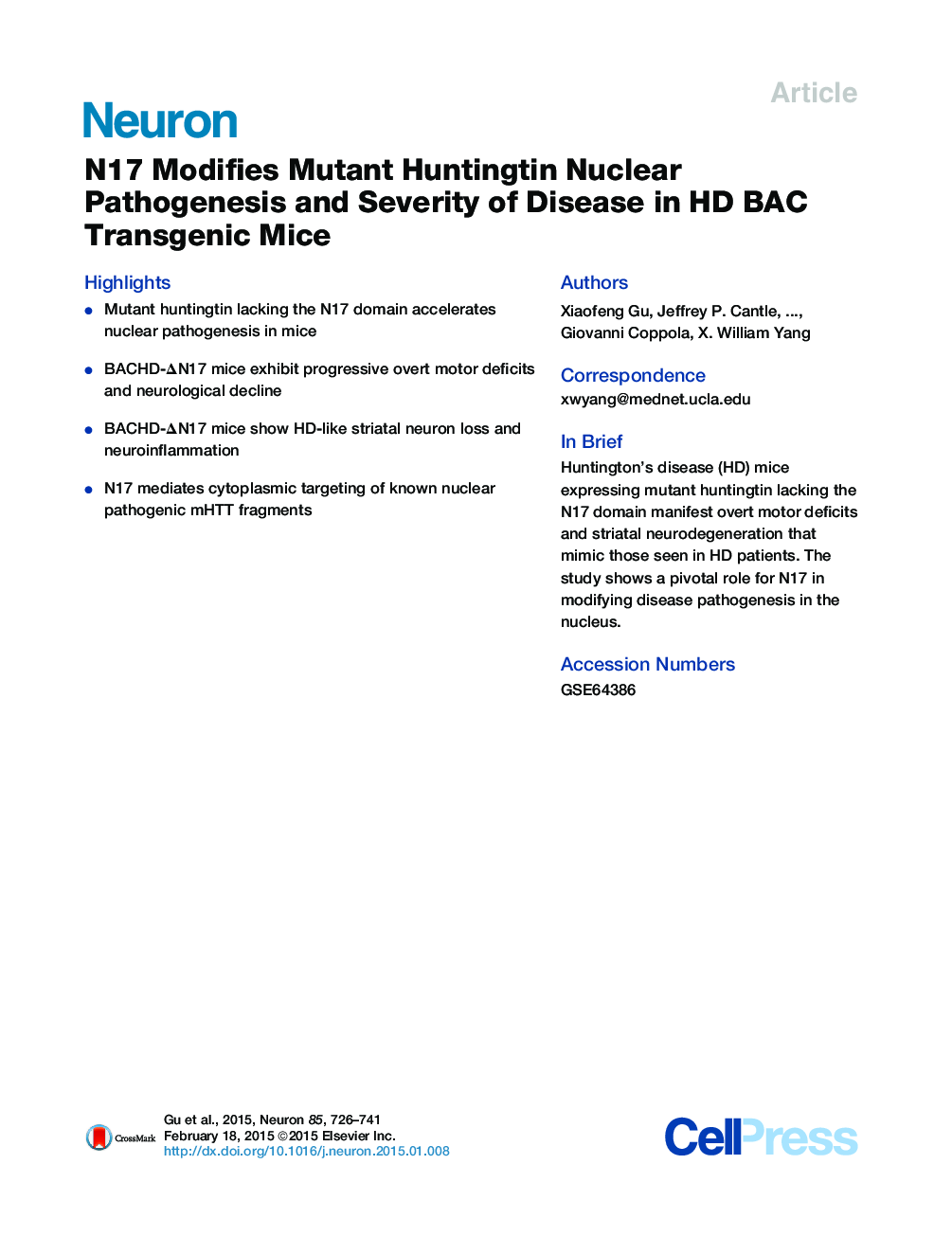| Article ID | Journal | Published Year | Pages | File Type |
|---|---|---|---|---|
| 4320888 | Neuron | 2015 | 16 Pages |
•Mutant huntingtin lacking the N17 domain accelerates nuclear pathogenesis in mice•BACHD-ΔN17 mice exhibit progressive overt motor deficits and neurological decline•BACHD-ΔN17 mice show HD-like striatal neuron loss and neuroinflammation•N17 mediates cytoplasmic targeting of known nuclear pathogenic mHTT fragments
SummaryThe nucleus is a critical subcellular compartment for the pathogenesis of polyglutamine disorders, including Huntington’s disease (HD). Recent studies suggest the first 17-amino-acid domain (N17) of mutant huntingtin (mHTT) mediates its nuclear exclusion in cultured cells. Here, we test whether N17 could be a molecular determinant of nuclear mHTT pathogenesis in vivo. BAC transgenic mice expressing mHTT lacking the N17 domain (BACHD-ΔN17) show dramatically accelerated mHTT pathology exclusively in the nucleus, which is associated with HD-like transcriptionopathy. Interestingly, BACHD-ΔN17 mice manifest more overt disease-like phenotypes than the original BACHD mice, including body weight loss, movement deficits, robust striatal neuron loss, and neuroinflammation. Mechanistically, N17 is necessary for nuclear exclusion of small mHTT fragments that are part of nuclear pathology in HD. Together, our study suggests that N17 modifies nuclear pathogenesis and disease severity in HD mice by regulating subcellular localization of known nuclear pathogenic mHTT species.
